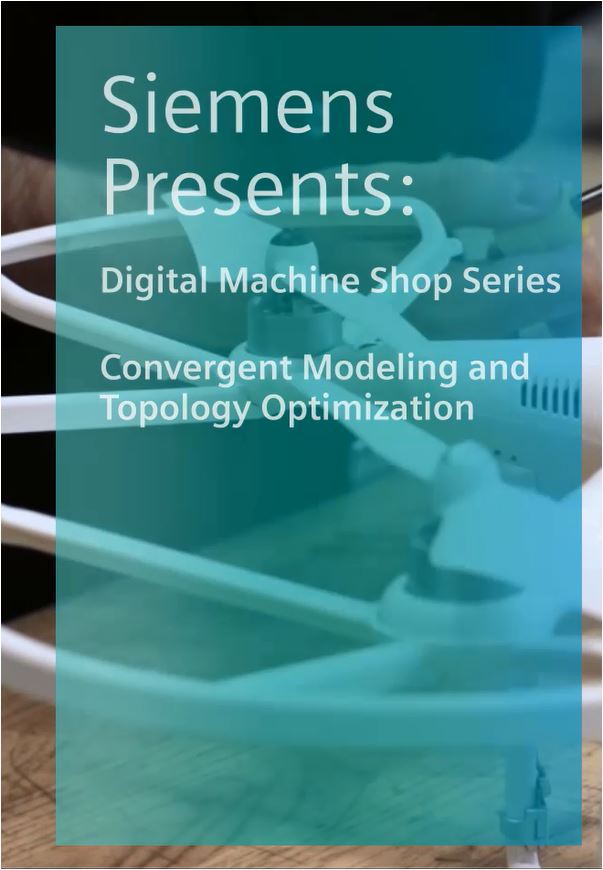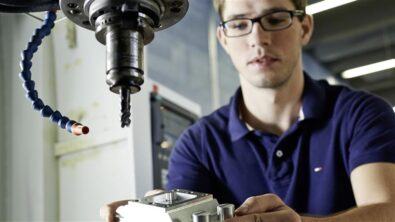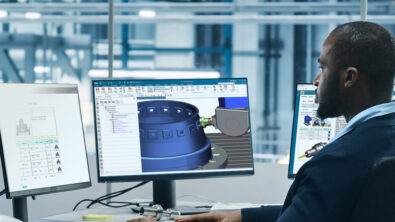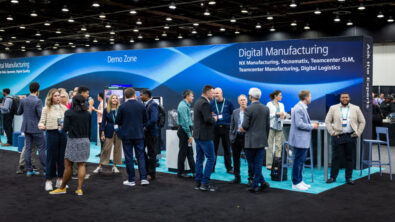Digital Machine Shop Series: Blog #8 Additive Manufacturing

3D printing started over 20 years ago but it was limited to soft material and plastic material. What has changed in the past few years is that printers are getting cheaper. Now everybody can buy a 3D printer for $500-600 and use it for hobby applications. The other trend that we see is steel and sand. I’ll show you an example from the aerospace industry. It is a perfect example of how to use 3D printing technologies to print a part which is hollow inside – which are not easy to manufacture the standard way. I’ll also tell you about hybrid machining.
In hybrid machining, we can use steel in a traditional machine tool, and combine it with a 3D printer, also known as 5-axis printer, inside the machine tool. You’ll see how we did this with DMG Mori – the machine is developed and programmed together with NX CAM.
In NX CAM software we now have operations to add material to generate 3D printing operations. Hybrid machining is a combination of adding material and removing material. The examples in the following video will show how the digital twin concept will help us to apply these new technologies.
Watch the video “Additive Manufacturing” to learn more.
Additive Manufacturing with NX
Additive manufacturing is changing the way products are made. New revolutionary machines and processes are rapidly pushing additive manufacturing from the prototype environment onto the production floor. Manufacturers are producing breakthrough product designs that were impossible to make using traditional methods. The benefits that additive production methods can provide include weight savings, better performance, simplified assemblies and more material options.
NX™ software provides a single, integrated system that meets the unique challenges of designing, optimizing and building metal and plastic components using the latest additive manufacturing methods. Because NX is a comprehensive platform for engineering design, simulation and manufacturing, you are able to combine special modeling functions with structural and topology optimization capabilities to develop groundbreaking designs using additive processes. By using NX you have the power to drive the latest additive manufacturing equipment, including powder bed 3D printers.
When talking about 3D printing in business, some think it is only used for aerospace customers but that is not true anymore. This technology is developing so fast we can now think about 3D printing, 4-axis, 5-axis printing, combining a printing process into a machine, and using a robot. The material development end of it is dramatic and advancing rapidly too. Every week we have new material that can be 3D printed. This requires us to think about design in an entirely different way. Watch this video describing topology optimization – a process of reducing un-needed geometry with the end result encompassing only the geometry we need to support a function. If you want to deal with complex shapes, we need some enhanced functions in the design space – we call it convergent modeling. With convergent modeling we can now use this complex geometry in a normal design environment.
Watch the next video: Digital Machine Shop: Convergent Modeling and Topology Optimization
Convergent Modeling Technology is a brand new and exciting modelling paradigm that enables designers to interact directly with Facet geometry, thus providing significant productivity gains. Incorporating facet geometry in your design workflow used to require a conversion process into surfaces and solids to support the operations. Reverse engineering workflows necessary to make such a conversion are often slow and require a fair amount of skill in order to achieve a good result. With convergent modeling, you can combine working with facets, surfaces, and solids without the need for any conversion. Convergent Modelling Technology also supports new manufacturing techniques such as 3D Printing and Additive Machining.
Let me know what you think of the videos in the comments section below.
By Armin Gruenewald, Vice President Business Development MBG, Manufacturing Engineering Software, Siemens Digital Factory.


